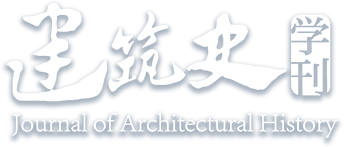Abstract:
The practice of “naming a study after a boat and designing a study in imitation of a boat”stands as a distinctive cultural phenomenon in China, embodying the seamless fusion of the “boat” symbolism with architectural space. While the gardens of the Ming and Qing dynasties exhibit a remarkable complexity and diversity, exploring the nascent practices of the Song dynasty becomes imperative for grasping the crucial nodes, structures, and evolutions within this intriguing phenomenon. However, this facet has long been overlooked due to the scarcity of tangible remnants and visual evidence. Consequently, this paper examines the formation and early development of this phenomenon by scrutinizing the Song dynasty “boat-architecture” instances documented in
Yongle Dadian. Through a rigorous analysis of literary data and an extensive excavation of pertinent historical context, this paper not only affirms that Ouyang Xiu’s “Huafang Zhai” served as a prototype in shaping this phenomenon but also underscores the pivotal role played by the unique historical backdrop and the shared life circumstances among designers in the acceptance and perpetuation of this cultural symbol.


 下载:
下载: